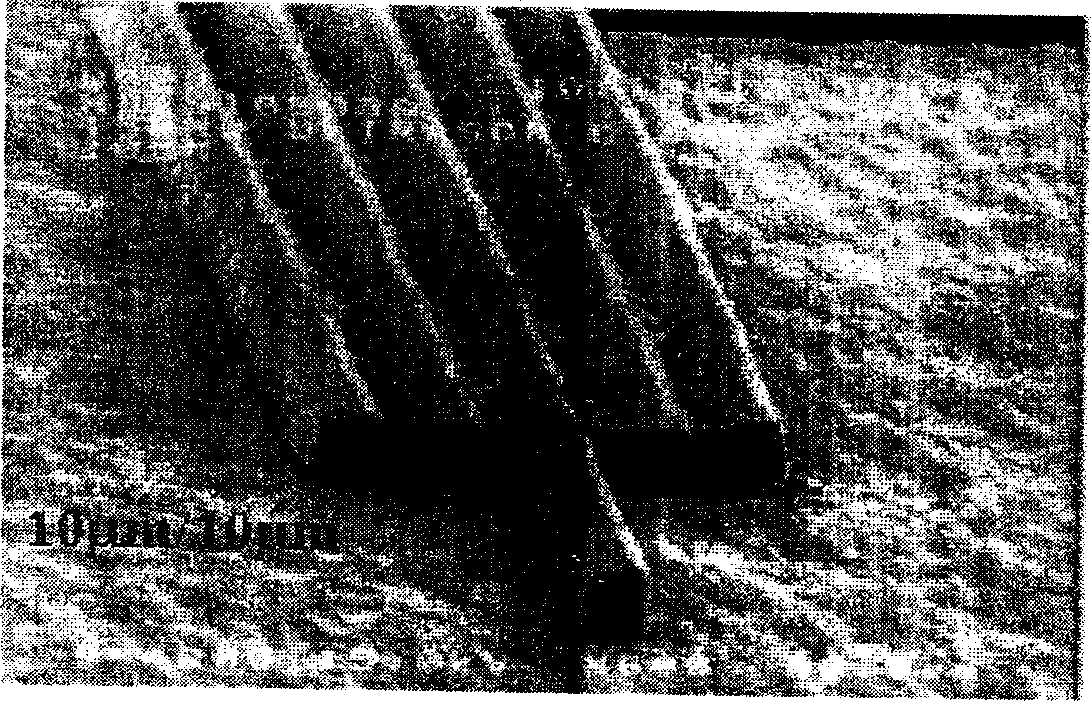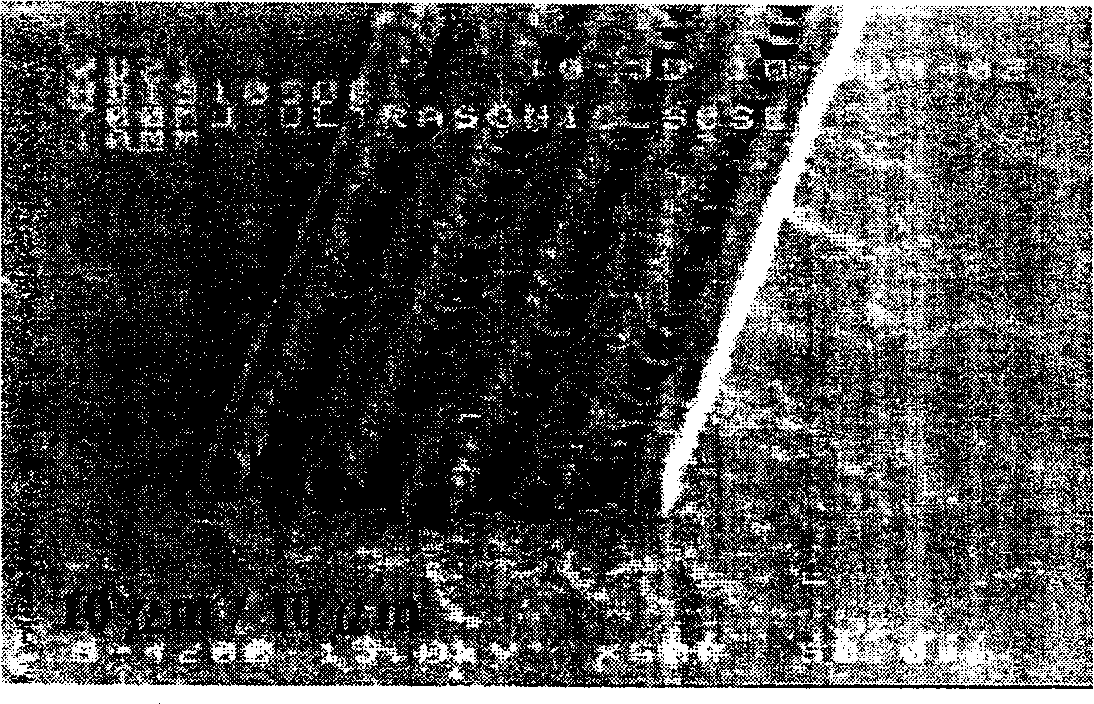Hybrid negative typed photoresistive agent in multiple reaction modes and method for forming photoesistive patterns
A technology of negative photoresist and multiple reactions, which is applied in the direction of optics, photomechanical equipment, photoplate making process of pattern surface, etc., can solve the problems of uneven reaction and difficult control of photoresist photoreaction efficiency, and achieve the goal of overcoming Effects of photoresist defects, reduction of distortion error, and high photoreaction efficiency
- Summary
- Abstract
- Description
- Claims
- Application Information
AI Technical Summary
Problems solved by technology
Method used
Image
Examples
Embodiment 1
[0052] The acrylic copolymer resin Resin A (Changchun Artificial Resin, No. 500) with molecular weight Mw of 98500 and acid value of 174mgKOH / g was dissolved in Propylene Glycol Monomethyl Ether Acetate (abbreviated as PMA) to prepare Resin solution with a resin concentration of 30 wt%. Get 20 grams of resin solution, add free radical photoinitiator 2,4,6-trimethylbenzene diphenyl phosphine oxide 2,4,6-Trimethyl Benzoyl Diphenyl Phosphine Oxide (abbreviated as TPO) 0.5 gram, 0.8 gram of Ciba company gram Irgacure 907 and 0.2 gram Isothioxanthone (abbreviated as ITX), stir until dissolved, add acrylic monomer bis-trimethylolpropane propionate Di-Trimethylolpropane Tetraacrylate2 code-named SR-355 .25 grams, 2.31 grams of Dipentaerythritol Monohydroxy Pentaacrylate code-named SR-399 and 1.5 grams of Ethoxylated Bisphenol A Diacrylate code-named SR-349, mixed and stirred evenly. The composition and weight percentage of the photoresist are shown in Table 1:
[0053] Apply the ph...
Embodiment 2
[0056] Take Joncryl 690 acrylic copolymer resin Resin B, that is, styrene-acrylic resin styreneacrylic resin, after modification, the acid value will be reduced to 200mgKOH / g, and it contains 7.13×10 unsaturated bonds -4 mol / g, molecular weight Mw is 16500, dissolved in PropyleneGlycol Monomethyl Ether Acetate (abbreviated as PMA) to prepare a resin solution with a resin concentration of 40wt%. Take 20 grams of resin solution, add 2.0 grams of free radical photoinitiator 2,4,6-trimethylbenzene diphenyl phosphine oxide Trimethyl Benzoyl Diphenyl Phosphine Oxide (abbreviated as TPO), add acrylic with code name SR-355 Monomer Di-Trimethylolpropane Tetraacrylate 1.54 grams, code-named SR-399 Dipentaerythritol Monohydroxy Pentaacrylate 0.75 grams and code-named SR-349 Ethoxy Bisphenol A diacrylate Ethoxylated BisphenolA Diacrylate 1.5 grams, stir and mix well. Its photoresist composition and weight percentage table 2:
[0057] Apply the photoresist on the 1 / 2oz copper foil substr...
Embodiment 3
[0060] The molecular weight Mw is 98500, the acid value is 174mgKOH / g acrylic copolymer resin Resin A, is dissolved in propylene glycol monomethyl ether acetate (abbreviated as PMA) in, is made into the resin that the resin concentration is 30wt% solution. Get 20 grams of resin solution, add 4.5 grams of o-cresol Novolac epoxy resin code-named CNE200, after mixing evenly, add code-named SarCat Cycloaliphatic Diepoxide 1.5 grams of K126 and propylene glycol carbonate TriarylSulfonium Hexafluorophosphate 50% in Propylene Carbonate containing 50% triaryl hexafluorophosphate sulfonium salt 0.6 grams, code-named SarCat 0.075 g of KI85 and Isothioxanthone (abbreviated as ITX) were stirred until uniformly mixed. The composition and weight percentage of the photoresist are shown in Table 3.
[0061] Apply the photoresist on the 1 / 2oz copper foil substrate, the thickness of the photoresist is 10μm, and the pattern is set so that the resolution of the photoresist is 25μm when the ...
PUM
| Property | Measurement | Unit |
|---|---|---|
| acid value | aaaaa | aaaaa |
| acid value | aaaaa | aaaaa |
| acid value | aaaaa | aaaaa |
Abstract
Description
Claims
Application Information
 Login to View More
Login to View More - R&D
- Intellectual Property
- Life Sciences
- Materials
- Tech Scout
- Unparalleled Data Quality
- Higher Quality Content
- 60% Fewer Hallucinations
Browse by: Latest US Patents, China's latest patents, Technical Efficacy Thesaurus, Application Domain, Technology Topic, Popular Technical Reports.
© 2025 PatSnap. All rights reserved.Legal|Privacy policy|Modern Slavery Act Transparency Statement|Sitemap|About US| Contact US: help@patsnap.com



